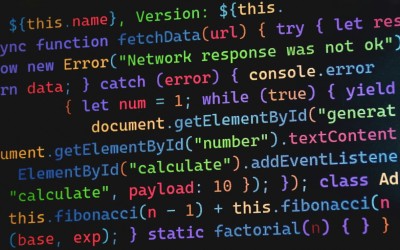Artificial Intelligence (AI) has been heralded as a revolutionary force in technology, promising to reshape industries, drive economic growth, and solve complex problems. From self-driving cars to virtual assistants, AI's potential seems boundless. However, with every breakthrough comes a set of challenges and ethical dilemmas that warrant careful scrutiny. While many AI advancements promise positive outcomes, several raise significant red flags that demand our attention. This blog post delves into some of these breakthroughs, exploring the potential risks and concerns associated with each.
The Allure of AI Breakthroughs.
AI has increasingly become a buzzword synonymous with innovation and progress. Breakthroughs in AI research and applications have led to significant advancements in fields such as healthcare, finance, and transportation. Machine learning, a subset of AI, enables systems to learn from data and make decisions with minimal human intervention. Deep learning, another subset of AI, mimics the human brain's neural networks, allowing for the recognition of patterns in enormous datasets.
Such advancements have fueled the belief that AI can tackle some of humanity's greatest challenges. However, as AI systems become more sophisticated, the complexity of their decision-making processes also increases, making them less transparent and more difficult to control. This opacity can lead to unintended consequences, raising ethical and safety concerns.
The Problem of Explainability.
One of the most significant red flags associated with AI breakthroughs is the problem of explainability. AI models, especially those based on deep learning, often operate as "black boxes," meaning their internal workings are not transparent. This lack of explainability can be problematic when AI systems are used in critical areas such as healthcare, criminal justice, and finance.
In healthcare, for example, AI-powered diagnostic tools can analyze medical images to detect diseases with remarkable accuracy. However, if these tools cannot explain their diagnoses, it becomes challenging for healthcare professionals to trust and verify their recommendations. This could lead to misdiagnoses or inappropriate treatment plans, potentially endangering patients' lives.
Similarly, in the criminal justice system, AI algorithms are increasingly used to predict recidivism rates and inform sentencing decisions. If these algorithms cannot provide transparent explanations of their assessments, they risk perpetuating biases and unfair treatment. The lack of explainability in AI systems can thus undermine trust and accountability, making it difficult to ensure ethical and fair outcomes.
Bias and Discrimination.
Another critical concern related to AI breakthroughs is the potential for bias and discrimination. AI systems learn from vast amounts of data, and if this data is biased, the AI can inadvertently perpetuate or even exacerbate these biases. For example, facial recognition technology has been found to be less accurate in identifying individuals with darker skin tones. This inaccuracy can lead to wrongful arrests or surveillance, disproportionately affecting marginalized communities.
AI systems can also reinforce existing gender biases. For instance, language models trained on internet text may reflect and propagate gender stereotypes found in the data. This can result in AI-generated content that perpetuates harmful gender norms.
Addressing bias in AI systems requires careful consideration of the data used for training and the development of algorithms that can identify and mitigate bias. However, achieving this is a complex task, as biases can be deeply ingrained in societal structures and thus reflected in the data.
The Threat of Autonomous Weapons.
The development of autonomous weapons represents another AI breakthrough that raises significant ethical and security concerns. Autonomous weapons, also known as "killer robots," are systems that can select and engage targets without human intervention. Proponents argue that these weapons could reduce casualties by removing humans from the battlefield. However, the deployment of such technology raises numerous red flags.
Firstly, the use of autonomous weapons poses a significant risk of accidental escalation of conflicts. Without human oversight, AI systems may misinterpret data or make flawed decisions, leading to unintended military actions. Additionally, the development and use of autonomous weapons could trigger an arms race, with nations competing to develop more advanced AI-powered military technology.
There are also ethical concerns about the delegation of life-and-death decisions to machines. Autonomous weapons lack the ability to understand the nuances of human context and emotion, raising questions about accountability and moral responsibility in warfare.
Privacy and Surveillance.
AI breakthroughs have also facilitated enhanced surveillance capabilities, raising concerns about privacy and civil liberties. Advanced facial recognition technology and data analytics tools allow for the monitoring of individuals on an unprecedented scale. While these technologies can be used for security purposes, such as identifying criminals or tracking terrorist activities, they also present significant risks to personal privacy.
Mass surveillance enabled by AI can lead to the erosion of civil liberties, as individuals may feel compelled to self-censor their behavior when they know they are being watched. Moreover, the deployment of surveillance technology is often conducted with minimal transparency or oversight, leading to potential abuses of power.
To address these concerns, it is crucial to establish robust legal and ethical frameworks that govern the use of AI in surveillance. This includes ensuring transparency in the deployment of surveillance technology and implementing strict safeguards to protect individuals' privacy rights.
Job Displacement and Economic Inequality.
The automation of jobs through AI and robotics is another area where breakthroughs can raise red flags. While AI has the potential to increase productivity and drive economic growth, it also poses a threat to employment. Many jobs, particularly those involving routine tasks, are at risk of being automated, leading to significant job displacement.
This displacement can exacerbate economic inequality, as those with lower levels of education and skills are more likely to be affected by automation. Moreover, the benefits of AI-driven economic growth are often unevenly distributed, with wealth concentrated among those who own and control AI technologies.
Addressing the potential economic impact of AI requires proactive measures, such as investing in education and retraining programs to help workers transition to new roles. Policymakers must also consider implementing measures to ensure that the economic benefits of AI are shared broadly across society.
AI breakthroughs hold immense promise for advancing human capabilities and solving complex problems. However, as these technologies continue to evolve, it is crucial to remain vigilant about the potential risks and challenges they pose. From issues of explainability and bias to concerns about privacy, job displacement, and autonomous weapons, the red flags associated with AI breakthroughs highlight the need for thoughtful regulation, ethical considerations, and robust oversight.
By addressing these challenges head-on, we can harness the power of AI responsibly and ensure that its benefits are realized in a way that aligns with our values and societal goals.




